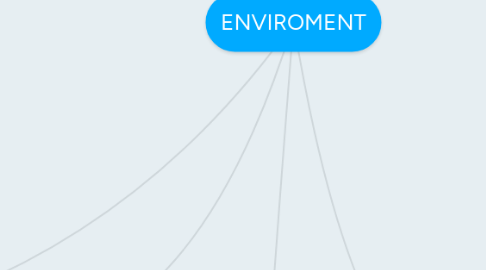ENVIROMENT
作者:DJ Tupaiz

1. Sea
1.1. Oceans. For centuries people have regarded them as an inexhaustible supply of food, a useful transport route, and a convenient dumping ground - simply too vast to be affected by anything we do.But human activity, particularly over the last few decades, has finally pushed oceans to their limit.
1.2. SHIPPING The oceans are huge highways, across which we ship all kinds of goods. Like other human activities, this heavy traffic is leaving its mark: oil spills, ship groundings, anchor damage, and the dumping of rubbish, ballast water, and oily waste are endangering marine habitats around the world.
1.3. POLLUTION Untreated sewage, garbage, fertilizers, pesticides, industrial chemicals, plastics.most of the pollutants on land eventually make their way into the ocean, either deliberately dumped there or entering from water run-off and the atmosphere. Not surprisingly, this pollution is harming the entire marine food chain - all the way up to humans.
2. Info
2.1. What we have... Biologists estimate there are between 5 and 15 million species of plants, animals, and micro-organisms existing on Earth today, of which only about 1.5 million have been described and named. The estimated total includes around 300,000 plant species, between 4 and 8 million insects, and about 50,000 vertebrate species (of which about 10,000 are birds and 4,000 are mammals). ...and what is being lost Today, about 23% (1,130 species) of mammals and 12% (1,194 species) of birds are considered as threatened by IUCN. Why are species disappearing? Global biodiversity is being lost much faster than natural extinction due to changes in land use, unsustainable use of natural resources, invasive alien species, climate change and pollution among others. Land conversion by humans, resulting in natural habitat loss, is most evident in tropical forests and is less intensive in temperate, boreal and arctic regions. Pollution from atmospheric nitrogen deposition is most severe in northern temperate areas close to urban centres; and the introduction of damaging alien species is usually brought about through patterns of human activity. Species loss is also compounded by: the ongoing growth of human populations and unsustainable consumer lifestyles increasing production of waste and pollutants urban development international conflict.
3. Land
3.1. A quarter of Earth was once covered by grasslands, but much of these have now been turned into farms. This has resulted in a widespread loss of wildlife habitat. Grassland soil is rich, and almost anything can be grown there. But poor agricultural practices can ruin soil and turn grassland into lifeless, barren spaces. If crops are not rotated properly, nutrients in the soil are stripped out, and nothing can be grown for several years. Compared to grassland, cropland provides few or no resources for breeding birds. Grazing livestock destroy grassland as well. Only 5 percent of the original prairie in the United States remains.
3.2. Threats Continued global warming could turn current marginal grasslands into deserts as rainfall patterns change. Land once incompatible with row-crop agriculture, but which provided a living to ranching families and habitat for prairie wildlife, is being converted to row crops. Development of urban areas is increasingly cutting into grassland habitat. Drought-hardy, cold-resistant, and herbicide-tolerant varieties of soybeans, wheat, and corn allow crops to expand into native grassland. Where only one crop is grown, pests and disease can spread easily, creating the need for potentially toxic pesticides.
3.3. Solutions Continue education efforts on how to protect the soil and prevent soil erosion. Protect and restore wetlands, which are an important part of grassland ecology. Rotate agricultural crops to prevent the sapping of nutrients. Plant trees as windbreaks. Conduct dry season burning to obtain fresh growth and to restore calcium to the soil that builds up in the dry grasses.
4. Air
4.1. Look at any ecosystem and there could be multiple forms of contamination—streams full of toxic chemicals from industrial processes, rivers overloaded with nutrients from farms, trash blowing away from landfills, city skies covered in smog. Even landscapes that appear pristine can experience the effects of pollution sources located hundreds or thousands of miles away. Pollution may muddy landscapes, poison soils and waterways, or kill plants and animals. Humans are also regularly harmed by pollution. Long-term exposure to air pollution, for example, can lead to chronic respiratory disease, lung cancer and other diseases. Toxic chemicals that accumulate in top predators can make some species unsafe to eat. More than one billion people lack access to clean water and 2.4 billion don’t have adequate sanitation, putting them at risk of contracting deadly diseases.
4.2. AIR POLLUTION Air pollution brings to mind visions of smokestacks billowing black clouds into the sky, but this pollution comes in many forms. The burning of fossil fuels, in both energy plants and vehicles, releases massive amounts of carbon dioxide into the atmosphere, causing climate change. Industrial processes also emit particulate matter, such as sulfur dioxide, carbon monoxide and other noxious gases. Indoor areas can become polluted by emissions from smoking and cooking. Some of these chemicals, when released into the air, contribute to smog and acid rain. Short term exposure to air pollution can irritate the eyes, nose and throat and cause upper respiratory infections, headaches, nausea and allergic reactions. Long-term exposures can lead to chronic respiratory disease, lung cancer, and heart disease. Long-term exposures also can lead to significant climatic changes that can have far reaching negative impacts on food, water and ecosystems.


